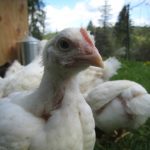about

welcome to a humble corner of the homesteading information supertubes. i'm a nerd who works for a big technology company and I spend some of my spare time doing things that are a little atypical (like raising and slaughtering chickens).
below you'll find links to some "recent posts." the historical ones are my posts resurrected from the days when the farm had a different name. you'll find that the interests outlined here are primarily focused on raising sustainable poultry and reducing our energy consumption.